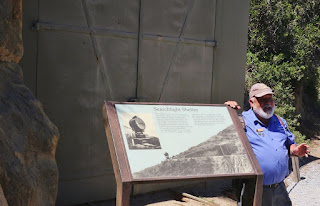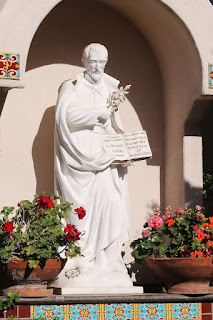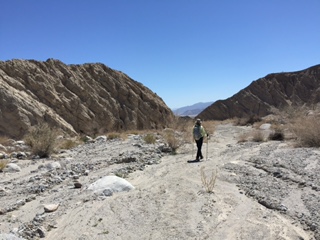Michael H. Momeni, PhD
Environmental Scientist
This has been a productive and fun period for our group. Some of the activities have progressed well,
new activities have been discussed, and some have been initiated. Our
initiatives have focused on education about our environment, preservation and
improvement of our local water quality, and wildlife protection. We
have expanded our ability to communicate within our organization and with the
public by creating our webpage, Facebook and Santa Margarita Blog. We are striving to make it easier for
interaction and feedback processes.
Environmental Air Quality
Among our environmental concerns is the air quality in our
region. Highway 15 crosses through
Temecula Valley. It is the major
highway between San Diego and the Inland Empire. The road usage parallels those on Highway 5. The regional population expansion has added
to the already congested roads, increasing the duration of travel between the
destinations. Although the Riverside Transit Agency
(RTA)
provides bus connections within the region, it is not widely used by commuters
mostly due to the increase in required travel time. Although exhaust from cars and trucks has
been well regulated in California, massive reliance on them as the principle
mode of transportation continues to contribute to the degradation of our air
quality. Our region lacks light
mass-transit trains. Thus, commuters’
transportation from the Valley to San Diego and Los Angles is mainly by use of
personal cars. We are actively searching
for ways to reduce these factors on our air quality. The addition
of a light mass-transit train from Escondido to Corona would go a long way to
alleviate some of the problems.
Wildlife Crossing Overpass:We have experienced a prolonged
period of abnormally low rainfall in our region. This problem
has stressed many plants and wildlife species. The narrow mountain range along Riverside and
Orange Counties has been home to about 20 Southern California Mountain
lions.
Mountain lions require a
large track of space estimated as about 200 miles for hunting and roaming each.
Under severe drought conditions, the lions would require a larger range for
hunting due to scarcity of deer and other wildlife species.
Highway 15 interrupts the
crossing between the Santa Ana Mountains and Palomar Mountains between Temecula and
Rainbow. Wildlife that attempts to cross
Highway 15 is at risk of being killed by cars and creates road hazards to motor
vehicles. In addition to deer, the documented number of mountain lions killed
on the Southern California highways included four mountain lions between
Temecula and Rainbow.

We had an unfortunate mountain lion death on Friday, March 6, 2015. The lion, a healthy 125 pounds male yearling, was seeking refuge in a loading dock at the Promenade Mall in Temecula.
The State Department of Fish and Wildlife wardens missed the lion’s shoulder and the tranquilizer entered the lung tissue causing his death. Genetic isolation of the population, in addition to this unfortunate event, further emphasizes the urgent need for creating a safe wildlife crossing across Highway 15 between Temecula and Rainbow. This wildlife bridge in Singapore (source: ecological bridge) permits safe passage of wildlife across the busy highway.
Restoration
Project:
Teri Biancardi is an active
participant in the restoration and management of about 400 acres of open space
within the Meadowview community in Temecula.
“But after years of traditional
management, the meadow is suffering”, she said. “Disking for weed abatement
nearly has wiped out the rare burrowing owls. Trails are eroding, non-native
plants have moved in. The soil is blowing away.”
Residents
decided to take different approaches:
- Graze instead of disc;
- Seed with bunch grass;
- Restores soil vitality
To
promote and educate the community and create pride about our environmental restoration
and protection, the community invited the following speakers:
• Jonathan
Snapp-Cook, US Fish and Wildlife
• Robert
Rutherford, Holistic Grazing, Professor Emeritus, Cal Poly San Luis Obispo
• Mark Kramer,
Meadowview Grazing Plan
• Dan Noble,
Association Compost Producers
• Bob Hewitt,
Natural Resources Conservation Service
• Kurt Campbell,
Meadowview Wildlife Biologist
Scott Bruckne
The project shows a process to
seek public participation and education.
Biancardi said: “It is evolving and we have had some success acquiring
financial grants for the project.”
Murrieta Creek
Regional Trail:
The trail connects the cities of Temecula, Murrieta,
Wildomar and Lake Elsinore. The trail is
designed for hiking, cycling and
horse riding. It serves as the spine of
a network linking the other trails in the region. This trail represents a joint effort between
the cities in partnership with the Santa Margarita Group of the Sierra Club.
Among the ongoing
activities in progress are creating trail posts and signs, placement of benches
along the trail, and other options for waste collection and disposal
containers.
Flood Control Project:
The project is a multi-purpose flood
control, environmental restoration and recreation project along 7.5 miles of
Murrieta Creek. The flood control project is divided into four
construction phases.
Our general
meeting is scheduled on April 14th in Temecula. Representatives of Murrieta, Wildomar and Lake
Elsinore will deliver an overview of trails in their cities. Gary Oddi will present a review of local
trails in Temecula. He is a retiring
educator from Great Oaks High School and a prominent member of the bicycling
community. He works with several organizations and, in particular, the Inland
Valley Mountain Bike Association (IVMTB).
April 23d, 2016,
Murrieta Creek Army Corps/Flood Control group will present the Phase 2 of the
project; the presentation will be followed by a guided tour of the project.
Celebration of the 100th Birthday of the National Park Service:
We will be visiting the Cabrillo National Monument to celebrate the 100th birthday of the National Park Service in 2016, and National Park Week from April 16 to April 24. The all-day activity was organized by Laurie Webster. The guided tour, she said: “will provide us with detailed history about the park and the Old Point Loma Lighthouse. The visit will include an optional hiking of the Bayside Trail.”
Public Participation, Meetup Group
Pam
Nelson, our Chair Lady, has actively involved the public regarding our
environment. Outdoor Family is an
associated group to the Santa Margarita Sierra Group, inviting parents and their children to discover and explore
some of the best natural places in and around Southwest Riverside County. They
meet monthly at a designated place, often guided by a ranger or scientist; they
discover plants and animals in that environment. Pam says: “The goal is to give
children a chance to learn about nature and come to love it as we do. “
One of the Family Outings was Primal Pastures Farm Tour. This educational experience placed the
participants out on the pasture with the domesticated animals. It was a great opportunity to learn about the
farming and visit birds, sheep, pigs, dairy cows, guard dogs, farm cats, and
more!
On
another outing, the group met at Vail Lake.
They hiked along the shore and the dry river bed. The meetup group hiked into the Agua Tibia
wilderness from the “Dripping Springs” campground. The next family outing is
scheduled for hiking a section of Warner Springs; it is going to be an easy
hike.
Trail Hike
- The Joshua Tree National Park's Black Rock Canyon Trail is 6 miles, moderately difficult with about 1000 feet gain in elevation.
- The Hike from Humber Park in Idyllwild to the Deer Springs Trail Head is 11 miles. The hike is strenuous with a gain of about 2400 feet in elevation.
Our two seasoned hike leaders are Robert Audibert
and Gary Marsalone. The two hikes scheduled for May and June 2016
are on May 7 "Black Rock Canyon Trail"
and June
11 “Devil’s
Slide Trail” followed to “Deer Springs Trail”.
The
Environmental Education Collaborative, the 2016 Symposium
On Thursday, February 25, 2016 the Environmental Education
Collaborative held the second annual symposium at the Living Desert in Palm
Desert. The Sierra Club San Gorgonio Chapter was represented by Margaret
Meyncke, from the Santa Margarita Group and George Hague, from the Moreno
Valley Group. This event was a huge success and a fabulous opportunity for
local educators to connect with a growing movement...environmental education.































